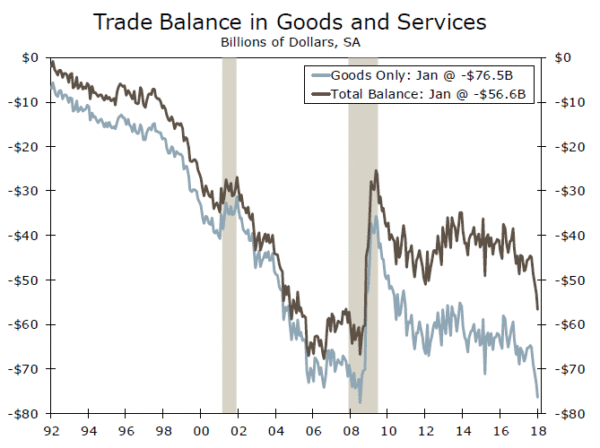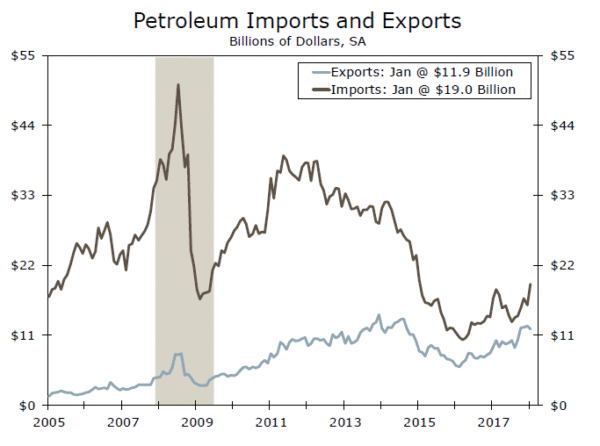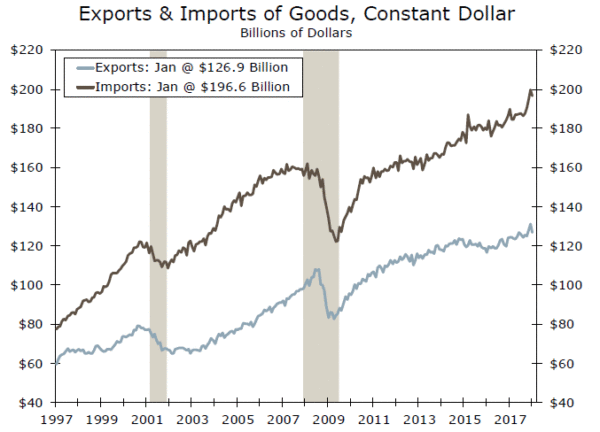Oil played a major role in the widening in the trade deficit in January. Although this volatility should subside, net exports likely will exert another significant drag on overall GDP growth in the first quarter.
Oil Played Outsized Role in Trade Dynamics in January
The U.S. deficit in international trade in goods and services widened to $56.6 billion in January from an upwardly revised figure of $53.9 billion in December (top chart). Not only was the outturn larger than most analysts had expected, but it was also the largest trade deficit that the country has incurred since October 2008. Although the value of overall imports was more or less flat in January relative to the previous month, exports of goods and services fell by $2.7 billion in January. As we will discuss, petroleum products played an outsized role on both sides of the ledger.
The weakness in exports was due, at least in part, to a $1.8 billion drop in aircraft exports, which can be notoriously volatile on a monthly basis. But the value of petroleum exports fell by nearly $600 million in January despite an upward trend in oil prices in recent months. In short, real petroleum exports tanked by 9 percent in January. On the other side of the ledger, the value of petroleum imports shot up by $3.2 billion, which largely cancelled out the $3.6 billion drop in non-oil imports. In that regard, there was widespread weakness in other major categories of imports.
In our view, the volatility in petroleum exports and imports in January is simply a seasonal quirk. As the middle chart makes clear, the value of oil imports has followed a downward trend over the past five years, while petroleum exports have been trending higher. These trends reflect the sharp increase in American oil production that has occurred in recent years. Moreover, the weakness in non-petroleum exports, which fell 2.7 percent on a real basis in January, and in non-petroleum imports—real non-oil imports were off 2.2 percent—were also one-off events. Solid economic growth in the rest of the world in conjunction with the lagged effects of past dollar depreciation should support American export growth in coming months. Likewise, strong growth in U.S. domestic demand should continue to pull in non-petroleum imports going forward.
Trade Likely Will Exert Drag on Real GDP Growth in Q1
These caveats notwithstanding, real exports came into 2018 with weak momentum while real imports started at a high level (bottom chart). If real goods exports in February and March remain unchanged at January’s level, then they will fall 3.7 percent on an annualized basis in Q1 relative to the fourth quarter. On the other hand, real imports will have grown modestly. Although we expect some rebound in real exports in February and March, it is evident that export growth in the first quarter will be weak. Real net exports of goods and services sliced 1.1 percentage point from topline real GDP growth in Q4-2017. Although the drag from trade in the first quarter likely will not be as extreme as it was in Q4, the headwinds on real GDP growth from the external sector are set to continue.















